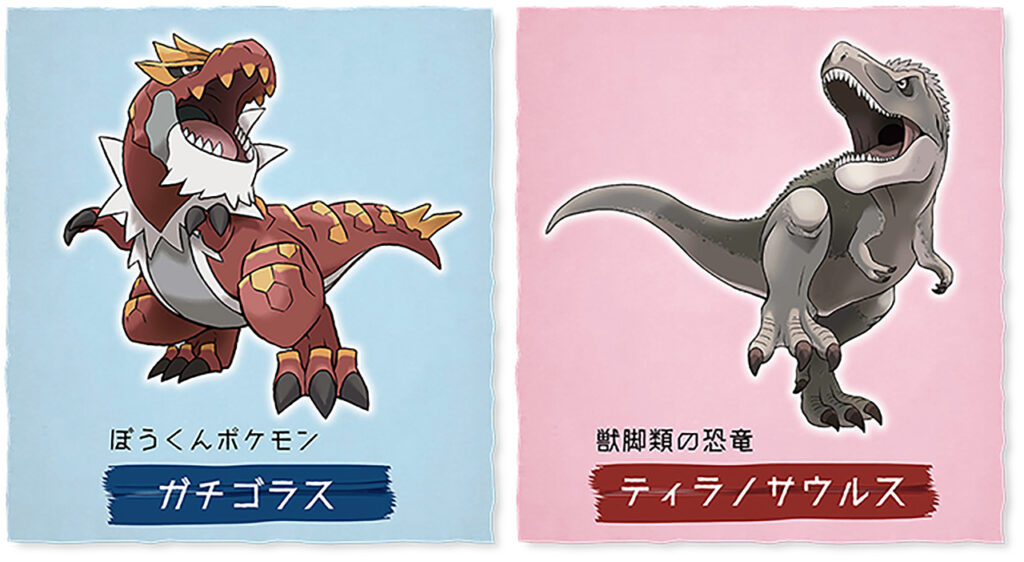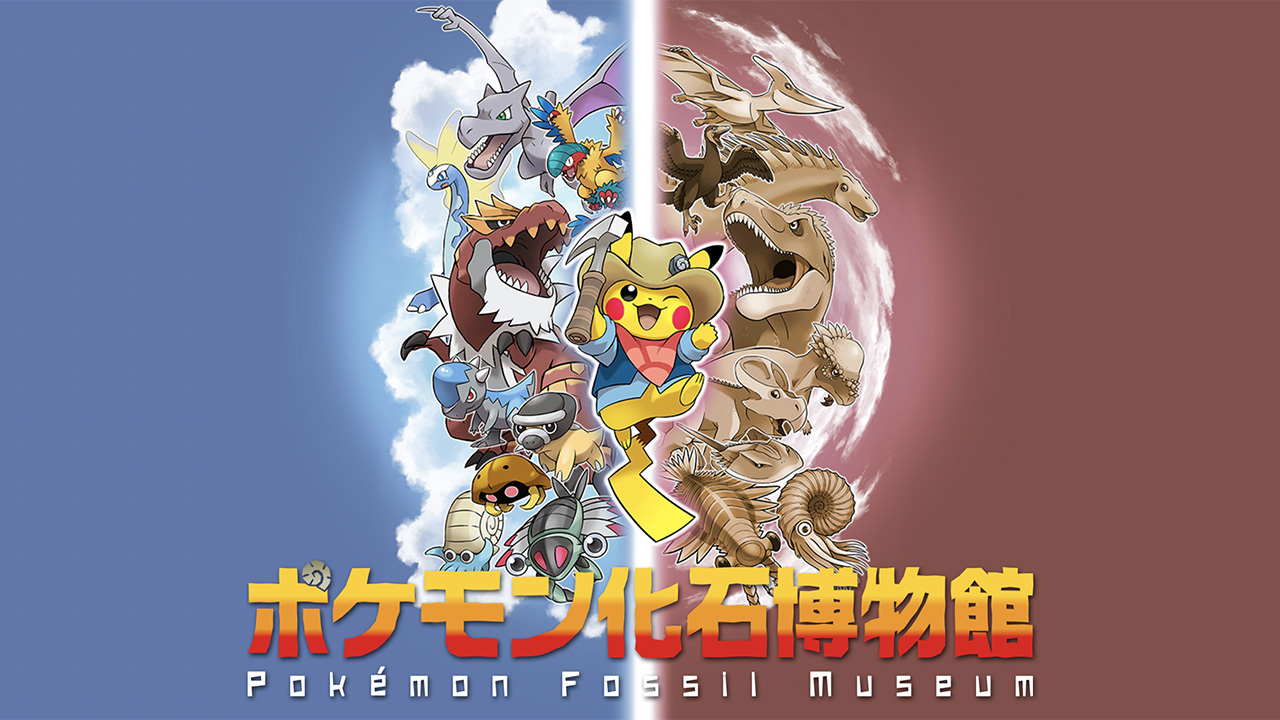Starting this month, the Pokémon Fossil Museum (ポケモン化石博物館) will be touring museums across Japan. The exhibition features life-size “fossils” of Pokémon characters like Tyrantrum and Kabuto, arrayed alongside that of real-life relics. The mission? To introduce young visitors to the joys of paleontology by playfully relating the video game’s reality with our own. Accompanying each stop is a range of official merchandise ranging from dinosaur-themed mugs and keychains to a Pikachu plush toy dressed as an archeologist.

Emphasizing paleontology, the Pokémon Fossil Museum draws parallels between the franchise’s dinosaur-like characters and real-life reptiles. Image: The Pokémon Fossil Museum.
Having opened at Hokkaido’s Mikasa City Museum, billed as the home to “the largest collection of ammonite fossils in Japan,” the exhibition will make its way to the Shimane Nature Museum of Mt. Sanbe on September 20, before traveling to Tokyo’s Natural Science Museum and the Toyohashi Museum of Natural History in 2022. Further dates are set to be announced.
Why it matters
Foremost, the Pokémon Fossil Museum is testament to the power of the company’s unbeatable intellectual property (IP). Valued at approximately $100 billion, Pokémon is one of the leading anime and cartoon franchises of the world, beating Disney, Marvel, Hello Kitty, and Harry Potter. An official briefing from Nintendo, one of Pokémon’s parent companies, further touts the brand’s strong fanbase of adults aged 20 to 30, built upon recent games like Pokémon Sun and Pokémon Moon. (Of note: Pokémon merchandise at Mikasa City Museum has already sold out once.)
For museums hoping to attract the interest and foot traffic of young visitors, while boosting their pop cultural cache, a partnership with Pokémon makes sense, particularly as the company has not been shy about channeling its IP into toys, anime, books, board games, trading cards, and exhibitions.

Pokémon Fossil Museum merchandise, which includes notepads, keychains, heat-sensitive mugs, and tote bags, has already been sold out once at the exhibition’s first stop. Image: Pokémon Fossil Museum
This outing, though, is far from the brand’s first foray into museum territory. In 2015, the Miraikan Science Museum hosted an exhibit called The Pokémon Lab; in 2016, at the peak of Pokémon Go, an augmented reality game available on smartphones, museums like the Tate Modern and the British Museum added PokéStops around their institutions where users (a.k.a. Pokemon trainers) could catch ‘em all. Later this week, Japanese department store Matsuya Ginza will launch Pokémon Colors, an interactive exhibition that brings to life the beloved video game through immersive installations.
Nintendo, too, has signaled its institutional ambitions — most notably, it’s planning to open a museum in Kyoto in early 2024. In an official statement announcing its plans, Nintendo said, “Nintendo Uji Ogura Plant and the land surrounding the building will be used as a new gallery to showcase the many products Nintendo has launched over its history. Nintendo has been discussing the possibility of building a gallery, as a way to share Nintendo’s product development history and philosophy with the public.”
By hosting the Pokémon Fossil Museum, the Pokémon Company and Nintendo are securing the franchise’s standing as a Japanese cultural icon. And as an onsite, physical exhibition, the edutainment format looks set to engage a new generation of consumers who, post-lockdown, might be ready for experiences beyond a video game or TV screen.



